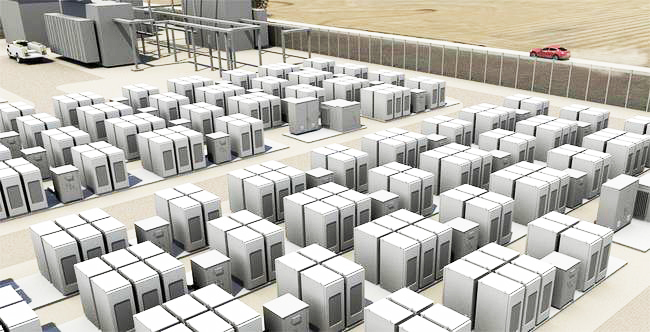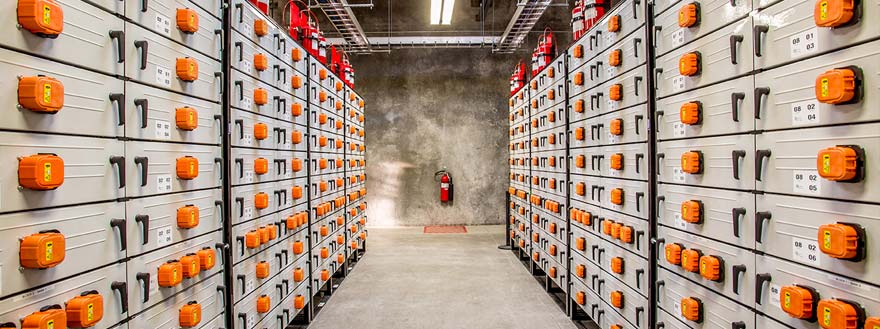Electricity is the lifeblood of our modern world. Without it, the vast majority of our tools, be it personal computers or network servers, would cease to be of any use.
This dynamic is most apparent during blackouts, as the lack of electricity puts all of our lives on hold, reminding us just how vital it’s become to daily activities. When there is no power flowing from the grid, businesses cannot provide their services, consumers can’t shop online, and families who depend on social networks such as Facebook to communicate are cut off from one another.
While it’s easy to see how we are all vastly dependent on electricity, or more specifically, our local energy grids, obscurity still surrounds the process of power generation, storage and transmission. Indeed, as our lives continue to grow more and more dependent on devices and services powered by electricity, it has become ever more apparent that our energy grids are not as efficient as they could be.
As evidence of this fact, think about how common it’s become to hear conversations about energy cost fluctuations, rolling blackouts, and a general lack of emergency preparedness.
One of the most important elements of solving the problems faced by our current power grid is how to deal with the energy storage problem. Fortunately, new technologies just recently arrived may hold the ticket to dealing with this important issue.
It is by no coincidence that when governing authorities and utility companies draw plans for improving and modernizing our power grids, Energy Storage Systems (ESS) like batteries are almost always the centerpiece of discussion.
In this article, we will be discussing everything there is to know about energy storage systems, their benefits, and how companies such as Telsa and Landmark Dividend are already re-shaping and improving our grids with ESS integration.
What are Energy Storage Technologies?
Energy storage systems, as the name implies, involve a web of sophisticated technologies used to store and deliver electrical power.
These technologies include systems such as the following:
• Mechanical: compressed air energy storage, flywheel energy storage, hydraulic accumulator, etc…
• Electrical: capacitors, superconducting magnetic energy storage (SMES)
• Biological: glycogen, starch
• Electrochemical: flow batteries, rechargeable batteries, supercapacitors, ultrabatteries
• Thermal: brick storage heaters, cryogenic liquid air or nitrogen, molten salt, etc…
• Chemical: biofuels, hydrated salts, etc…
All of these technologies work to preserve excess energy in a usable state so that it can be distributed and utilized at a later time.
Advantages of Battery Storage Technology
Electricity storage technologies present the clearest path to improving both the stability of the grid and the efficiency at which power is delivered, while also helping to keep energy prices stable.
Here are some of the most important benefits of reliable energy storage systems:
• Energy Management
• Backup Power
• Load Leveling
• Frequency Regulation
• Voltage Support
• Grid Stabilization
• Emergency Preparedness
Why Does the Grid Need More Battery Storage?
 The benefits of expanding our available electricity storage systems are best illustrated by explaining an issue many energy producing facilities are currently experiencing; energy waste.
The benefits of expanding our available electricity storage systems are best illustrated by explaining an issue many energy producing facilities are currently experiencing; energy waste.
Throughout a typical day, the grid is powered by a series of “base load” power plants that provide the energy required to meet the current load (current level of energy use). As load levels increase throughout the day, these power plants have to consume more fuel in order to meet the rising demand for additional power.
The fluctuation in demand for power, in conjunction with fuel availability, can have a significant impact on the operational costs of energy producers. And since power producers can’t perfectly estimate the level of power they need to produce each day, they can end up making too much (since there’s nowhere to store it), or too little (leading to phenomenon’s like “rolling blackouts”); each of which have financial consequences that means rising energy costs for consumers.
Energy producers do try to estimate how much power they need to produce each day, but it’s often impossible to get it just right. If the base load power plants are producing more energy than what the grid currently requires, that energy has to either be sold elsewhere or it goes to waste.
To avoid financial losses, sometimes base load power plants even have to resort to preventable measures such as dialing back energy production, or shutting down altogether (a practice known as “curtailing”).
These practices are especially common with renewable energy sources such as solar farms, where facilities have no control over the level of sunlight the panels receive, which can lead to a great deal of waste.
Even if demand were stable from day to day, solar plants have to deal with fluctuations in weather, which means that there will be days their solar panels produce more energy (or less energy) than their average daily amount.
When the sunlight is plentiful, but there’s no avenue for sending the excess energy elsewhere, some panels end up getting shut off to reduce operating costs and reduce waste. But what if that energy could be stored for later use?
Enter Battery Storage Systems
Energy storage systems, such as battery farms, can help reduce the need for power producers to curtail, as any excess energy produced by their power plants can be stored for later use. This is especially important for solar, wind and other similar forms of renewable power, but it also applies to traditional sources as well.
Traditional fossil fuel-based power plants (i.e., coal, oil, gas, nuclear, etc.) can make their operations significantly more efficient by integrating battery storage systems, which allows them to keep consistent power production levels, reducing risk and waste.
Because of energy storage systems, peak energy generation can also be reduced, which ultimately translates into cost savings for both the utility companies and for the consumer, as the plants total fuel consumption can remain relatively static regardless of load.
And finally, as an added benefit, energy storage with batteries can also be utilized during times of emergency. If, for whatever reason, a traditional or renewable energy source can no longer provide energy to the grid, energy storage systems can be called upon to feed the grid until the impacted power plants return to full operational capacity.
States Mandate Battery Storage
The benefits of energy storage systems are so plentiful that some governing bodies across the U.S are beginning to mandate they be integrated into the power grid.
California is one such state, and in 2013, the California Public Utilities Commission (CPUB) unanimously approved mandates that require the state’s big three investor-owned utility companies to add 1.3 gigawatts of energy storage devices to the grid within 10 years.
But California isn’t the only state making these sorts of moves, as Oregon and Massachusetts are also pursuing energy storage as a method for modernizing their energy grids as well.
It’s highly likely that other states will soon follow in their footsteps, and that we’ll see more and more battery storage facilities being added to the grid in the near future.
Current and Future Energy Storage Projects
These state-wide mandates are already beginning to have a profound effect across the United States.
For example, take the city of Los Angeles: by 2021, the city hopes to completely replace the use of peaking power stations with one of the world’s largest networks of battery storage systems. In fact, one of the first of these new grid energy storage systems was unveiled on January 30, 2017.
This facility was created as a joint effort between Tesla Motors Inc., Southern California Edison, and local authorities, and contains nearly 400 Tesla PowerPack units spread across a 1.5-acre site located at a Mira Loma substation in Ontario.
These units can store enough energy to power approximately 2,500 homes for an entire day, or 15,000 homes for up to four hours. Even more impressive than this energy capacity is the speed at which the facility was brought online, going from concept to full operational capacity in less than six months.
The rapid speed that this facility was created is the direct result of battery storage technology production and operation becoming more efficient, and capable of operating at the utility scale. But this is just the beginning, because as demand continues to grow for lithium-ion batteries and electric cars, the cost to produce such systems will continue to fall in the future, and the process will be made even more efficient.
Elsewhere in California, battery storage facilities of similar size are being implemented by San Diego Gas & Electric with AES Energy Storage, and by Greensmith Energy Partners with Altagas. Combined, these energy storage technology systems are projected to add 77.5 megawatts of reliable energy storage capacity to the state’s electricity grid.
Landmark Dividend’s Role
Landmark Dividend is one of the nation’s leading land acquisition companies for renewable energy and battery storage projects, and has provided funding for more than 60 land assets underneath the “renewable assets” umbrella.
Most recently, Landmark Dividend acquired approximately 4,000 acres of land in California underneath four utility-scale solar photovoltaic (PV) projects developed by Recurrent Energy. With this acquisition, Landmark Dividend and its subsidiaries, including Landmark Infrastructure, now lease land interests to over 1GW of renewable energy projects, including solar, wind, transmission and battery storage facilities.
Please click here to submit your information so that we may contact you.

